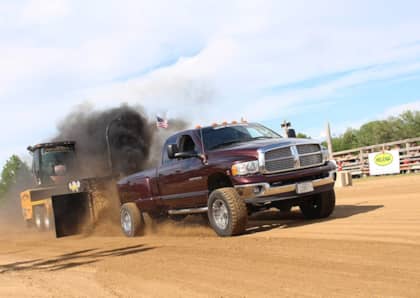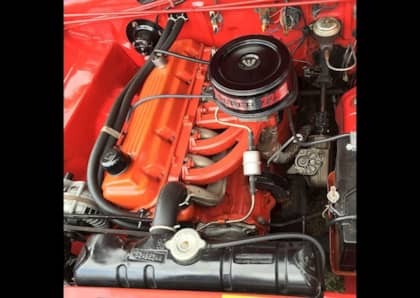5.9L vs. 6.7L: Which Cummins Is Really Better?
When it first arrived on the scene for ’07.5 model year Dodge Rams, the 6.7L Cummins had a lot to live up to. After all, the 5.9L it replaced was highly revered for its million-mile durability, vast performance potential, and an endless supply of aftermarket parts and support. Luckily, more than 40 percent of the 6.7L’s internals were carry-over parts from the 5.9L, and the injection system remained virtually the same.
The common-rail 5.9L Cummins was produced from 2003-2007 and featured a fixed-geometry turbo. It put out 325hp and 610 lb-ft of torque by the end of its run, along with 359 ci of displacement coming from a bore of 4.02 in and stroke of 4.72 in. The 6.7L Cummins started its run for 2007.5 model year Ram trucks with 350hp and 650 lb-ft of torque. It used a variable geometry turbo and had a bore of 4.21 in and stroke of 4.88 in, with 408.2 ci of displacement.
However, as far as emissions control devices are concerned, the 6.7L would be saddled with the full gamut — something 5.9L owners knew absolutely nothing about. The brand new, 6.7L Cummins came with exhaust gas recirculation (EGR) and a diesel particulate filter (DPF). On 2013 model year Rams, selective catalytic reduction (SCR) would be added to the mix, which as part of the exhaust after treatment system would require the use of diesel exhaust fluid (DEF) to reduce NOx emissions.
And now the trade-offs begin! Due to the aforementioned emissions control components, fuel economy is noticeably lower on 6.7L-equipped trucks as well as its overall reliability. However, the 6.7L’s use of a variable geometry turbocharger makes it much more responsive than the 5.9L at low rpm, not to mention that it incorporates a very effective exhaust brake function. The 6.7L’s larger displacement also helps produce considerably more torque, which is ideal for truck owners that spend a lot of their time hooked to a trailer.
While plenty of folks still believe the venerable 5.9L is the end-all, be-all Cummins, many have embraced the fact that the 6.7L is basically a bigger, better version of the 5.9L. But, is the 6.7L actually the better engine? To try to settle this 50/50 split, we’ve spelled out each engine’s strong suits and key weaknesses below.
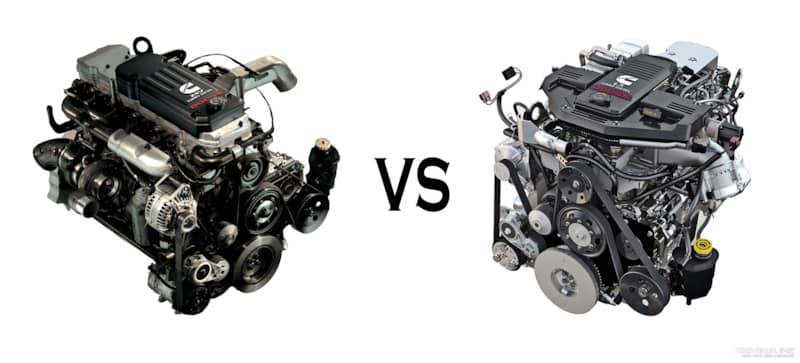
*FYI: With so many versions of the 5.9L being produced (12-valve with mechanical injection, 24-valve with electric-over-mechanical injection, 24-valve with common-rail injection), we’re concentrating on the last 5.9L engine produced for the purposes of this article: the 24-valve, common-rail version produced from 2003-2007.
HARD FACTS
| 5.9L Cummins Specs | 6.7L Cummins Specs | |
|---|---|---|
| DISPLACEMENT | 359ci | 408.2ci |
| BORE | 4.02 inches | 4.21 inches |
| STROKE | 4.72 inches | 4.88 inches |
| COMPRESSION RATIO | 17.2:1 | 17.3:1 |
| INJECTION SYSTEM | Bosch high-pressure common-rail | Bosch high-pressure common-rail |
| INDUCTION | Holset HE341 (’03-‘04) or HE351CW (’04.5-‘07) fixed geometry turbocharger | Holset HE351VE variable geometry turbocharger |
| FACTORY HORSEPOWER | 325 hp (2005-2007) | 350 hp (2007.5-2012), 385 hp (2013-2016) |
| FACTORY TORQUE | 610 lb-ft (2005-2007) | 650 lb-ft (2007.5-2012), 850 lb-ft (2013-2014), 865 lb-ft (2015), 900 lb-ft (2016) |
High-Pressure Common-Rail
5.9L Cummins engines built between 2003-2007 and all 6.7L mills utilize a high pressure common-rail fuel system. At the heart of the system sits a Bosch CP3 injection pump, which is responsible for creating in excess of 23,000 psi of fuel pressure and then maintaining that pressure. It’s rumored that the version of the CP3 that graces the 6.7L flows more, but we’ve never been able to confirm this (even Bosch agrees it’s just hearsay).
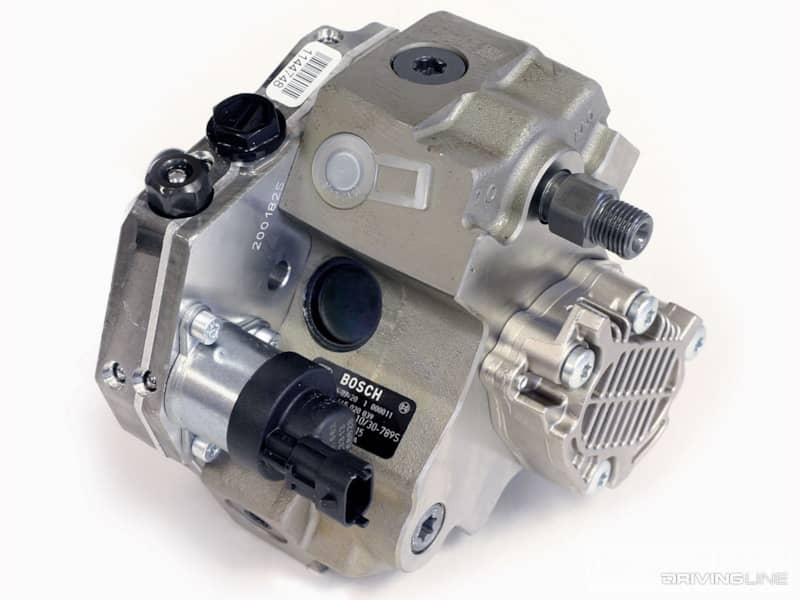
Per Bosch’s data on the 5.9L and 6.7L CP3, the pump flows 180 to 185 lph at 3,500 rpm. However, the common-rail system aboard the 6.7L Cummins does have a fuel rail, fuel rail feed lines, injector lines and crossover tubes that measure 50 percent larger than what you’ll find on the 5.9L. Because the 6.7L’s injection system operates at slightly higher pressure than the 5.9L’s, a pressure relief valve with an additional 3,000 psi rating is used.
Similar Injectors
While the injectors used in both the 5.9L and 6.7L Cummins appear similar in dimension, the version used in the 6.7L is designed and rated for higher pressure (and also requires lower voltage to operate them).
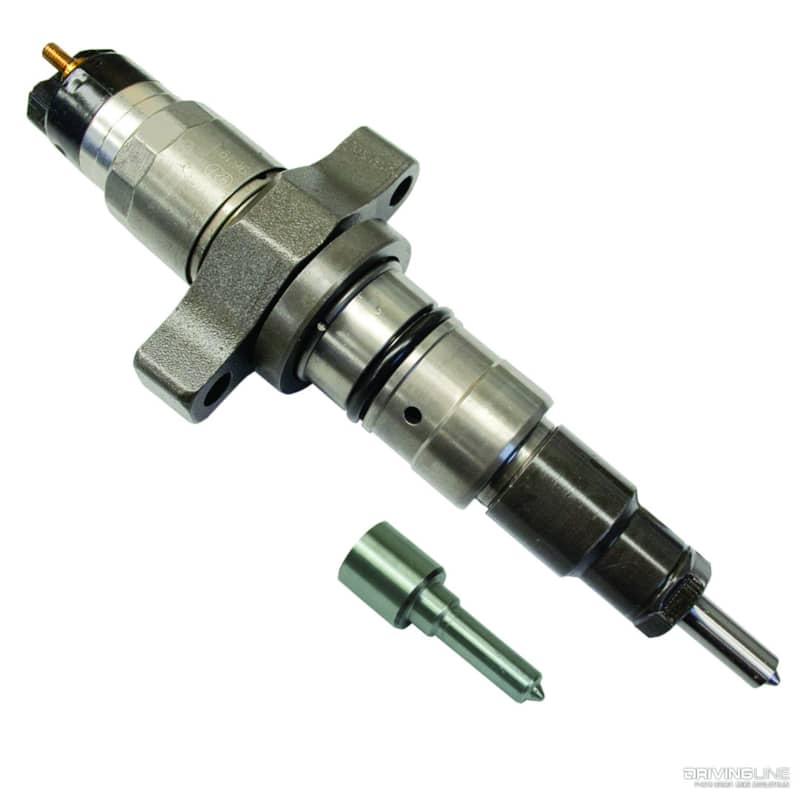
Unlike the 5.9L injectors, the units used in the 6.7L are programmed to each specific truck’s ECM, and injectors can’t be swapped into different cylinders (which was possible on the 5.9L).
Fixed Geometry Turbo (5.9L)
For the sake of a stock vs. stock turbo comparison, the Holset HE351CW found on ’04.5-’07 5.9L Cummins mills is by far simpler and less technologically advanced than what graces the 6.7L.
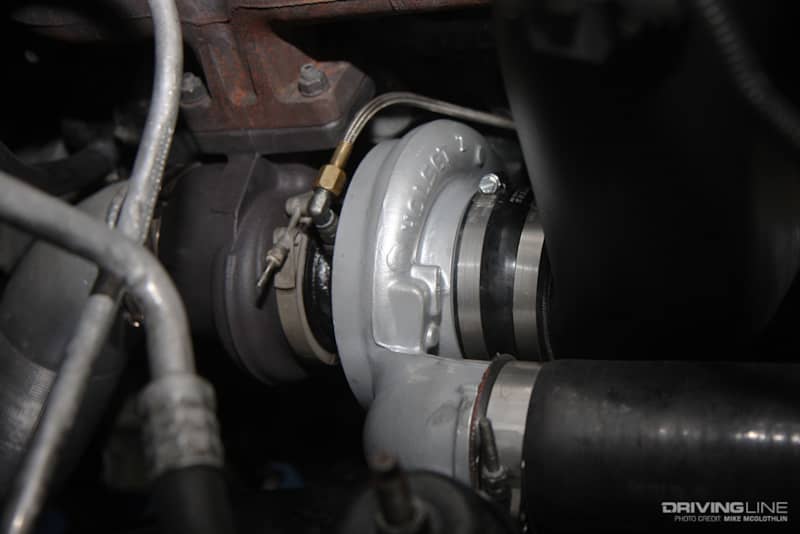
The HE351CW features a 58mm compressor wheel (inducer), a 58mm turbine wheel (exducer), employs an internal wastegate and is extremely durable, as long as it’s not subjected to 45 psi of boost or more on a regular basis. However, its fixed geometry design means there is no getting around turbo lag at low rpm.
Variable Geometry Turbo (6.7L)
Good responsiveness at any engine speed is a good way to describe what variable geometry turbochargers provide, and the Holset HE351VE on the 6.7L Cummins is no exception. This turbo features a 60mm compressor wheel (inducer), is void of a wastegate and features Holset’s variable nozzle technology. By varying the exhaust flow across the turbine wheel (via the nozzles), the turbo can perform like a smaller unit at lower engine speed (to aid responsiveness) and then act like a much bigger turbo at higher rpm. This effectively offers optimum performance at any point in the engine’s power band, from idle to redline.
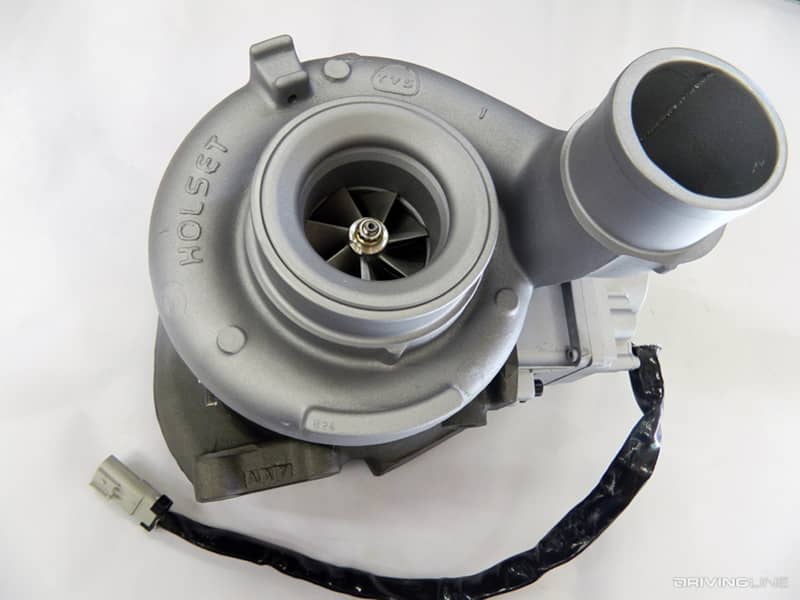
While the HE351VE sounds like the best of both worlds, it does have some reliability issues. And, the problems the HE351VE has aren’t lost on any variable geometry style turbo design: carbon, soot and coking in the turbine side hampering the operation of the nozzles (i.e. causing them to stick). If the nozzles remain stuck in the open position, you’ve got a laggy truck until the tach shows a good amount of rpm. If they stick closed, you’re driving a truck that is really only usable at lower rpm. It’s widely known among 6.7L owners that the best way to avoid ending up with a sticking turbo is to leave the exhaust brake on at all times (which exercises the nozzles).
Exhaust Brake Function (6.7L)
That’s right, we said exhaust brake. Technically a turbo brake, the HE351VE’s variable geometry design can be used to create considerable braking power, thereby saving considerable wear on the truck’s service brakes. By changing the nozzles’ positioning to yield more restriction, the 8,000-pound heft of an ’07.5-present Ram can be slowed surprisingly quickly.
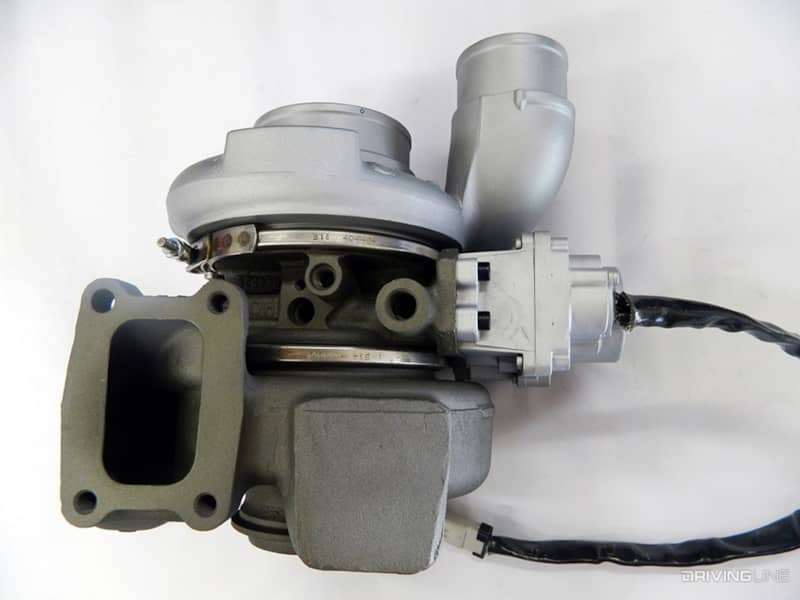
As far as the exhaust brake department goes among all newer trucks (including ’11-present Fords and ’11-present GM’s), the Holset HE351VE is second to none in its ability to decelerate a vehicle. To cut to the chase, the HE351VE’s aggressive and effective exhaust brake function makes 6.7L powered Rams towing machines.
Emissions System Failures (5.9L Exempt)
While acronyms like “EGR” and “DPF” were a foreign language to 5.9L owners (unless you count a catalytic converter), 6.7L owners are well aware of how they function, and many have experienced a sticking EGR valve (due to carbon and soot buildup) or a plugged DPF.
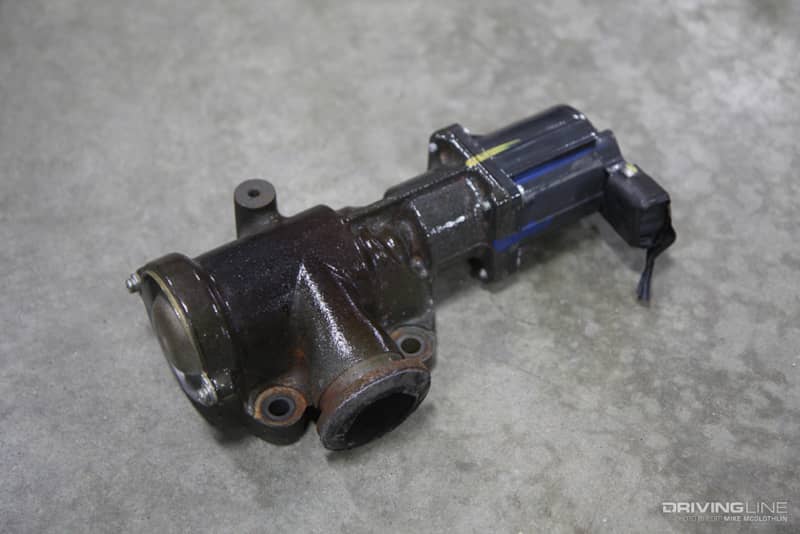
A dirty, sticking EGR valve is shown here, and we’ll note that Cummins specifies it’s necessary to clean the EGR valve (and EGR cooler) every 67,500 miles in order to maintain trouble-free functionality. The 5.9L definitely has the advantage in this category due to its lack of emissions devices throughout its production run.
Blown Head Gasket (6.7L)
Thanks to its increased stroke over the 5.9L (4.88 inches vs. 4.72 inches), the 6.7L makes considerably more torque at low rpm, especially when combined with the aforementioned quick-lighting variable geometry turbocharger. Unfortunately, this means more cylinder pressure is present in the cylinders, which is the primary culprit for a surprisingly common problem on the 6.7L: head gasket failure. A lack of sealing area between the cylinders and water jackets (due to the 6.7L’s larger bore) is also to blame for its frequent, blown head gasket scenarios.
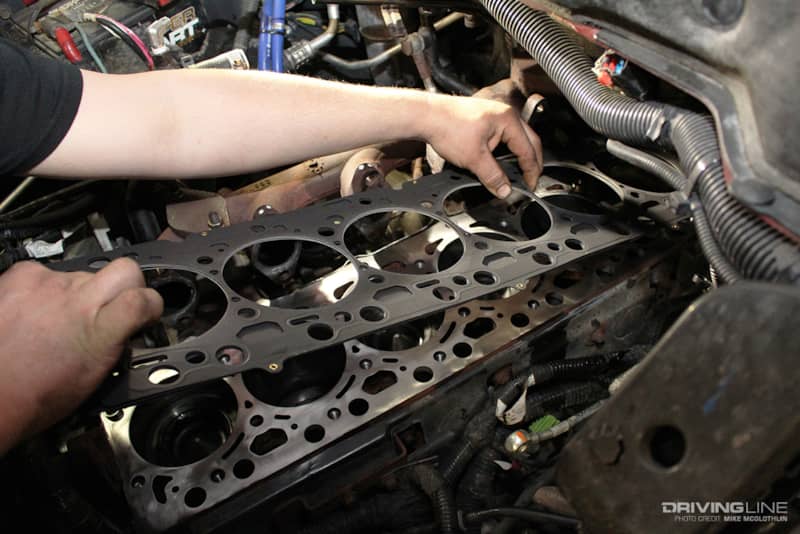
Engines that tow regularly are known to lift the head anywhere near the 200,000-mile mark, while modified engines typically one much sooner. By comparison, head gasket failures were few and far between on the 5.9L Cummins, and we’ve even seen owners of 12-valve 5.9L’s retorque the factory head bolts, add compound turbocharger systems and make 100 psi of boost without experiencing a head gasket issue.
Solid Foundation
Nearly a decade into its production run, the 6.7L block has become the preferred foundation in diesel motorsports — mainly due to its Siamese cylinder bore design and the displacement advantage it provides.
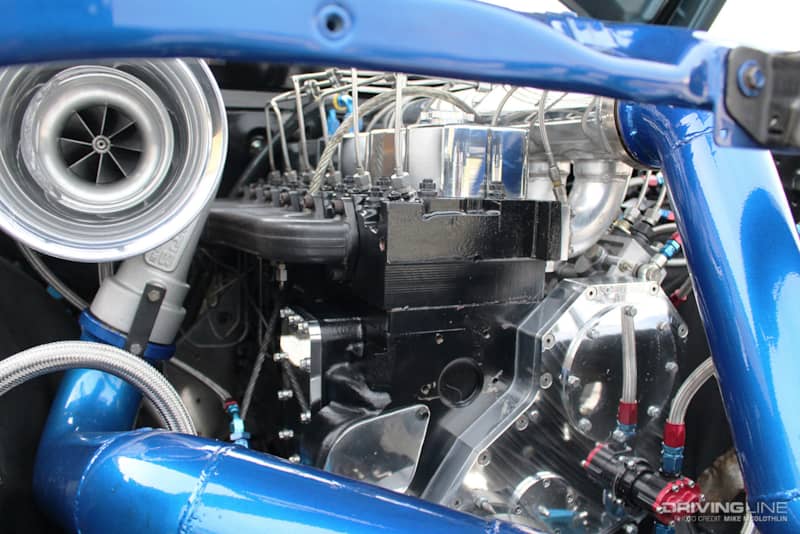
In the upper echelon of truck pulling and drag racing, several companies add sleeves to the cylinders, a deck plate up top (to keep the tops of the cylinder bores from distorting) and increase the stroke of the crank. 6.7L blocks treated to this type of machining typically wind up with 390 cubic inches of total displacement, produce anywhere between 1,800 and 3,000 hp and do so in ultra-reliable fashion.
5.9L Pros & Cons
PROS:
- 325hp/610 lb-ft stock (2005-2007 model years)
- Fixed geometry turbo is more reliable than the 6.7L’s variable geometry unit
- No emissions equipment other than catalytic converter
- More sealing area + less cylinder pressure than the 6.7L (torque) = fewer head gasket failures
CONS:
- Smaller displacement (359ci) resulting in less low-end torque
- Less cubes means it’s harder to light a bigger turbo
- Fixed geometry turbo is laggier than the 6.7L’s variable geometry unit
- Lower pressure, smaller fuel rail and injection lines on common-rail system
6.7L Pros & Cons
PROS:
- Larger displacement and longer stroke than the 5.9L means more low-end torque and better ability to spool a larger turbo
- 350hp to 385hp stock (depending on model year and transmission)
- 650 lb-ft to 900 lb-ft of torque stock (depending on model year and transmission)
- Variable geometry turbo is very responsive (no lag) and incorporates a turbo brake
- Higher pressure, larger fuel rail and injection lines on common-rail system
CONS:
- Much more prone to head gasket failure
- Variable geometry turbo is less reliable than the 5.9L’s fixed geometry unit
- EGR system is prone to failure
- DPF is prone to failure
- SCR system adds a failure point (‘13+ trucks)
More From Driving Line
- Read this diesel engine comparison article to see if the 7.3L or 6.0L Power Stroke is better.







